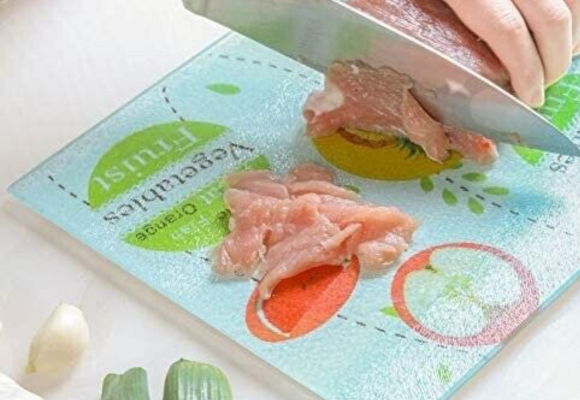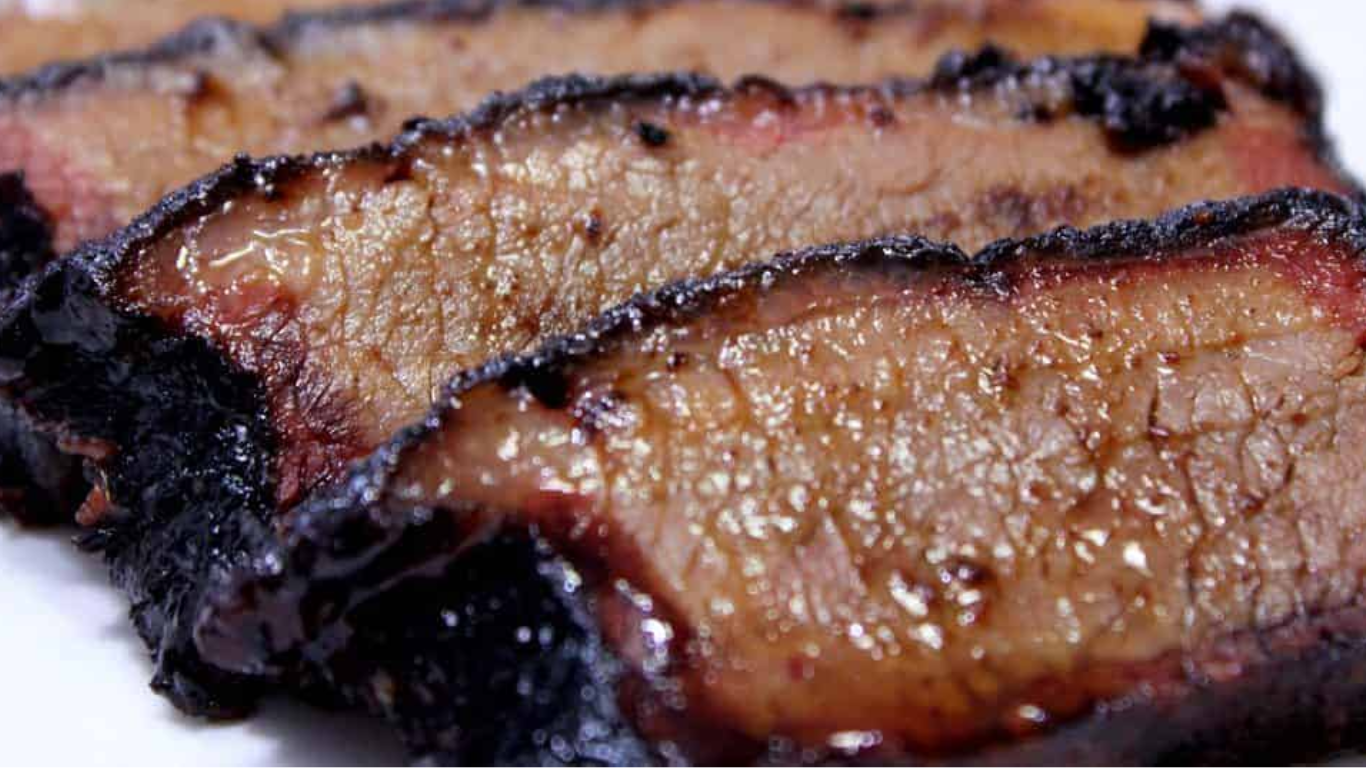When it comes to preparing meat in the kitchen, choosing the right cutting board is essential for both hygiene and culinary success. Among the array of materials available, glass cutting boards offer an aesthetically pleasing and durable option. However, their suitability for handling meat is a topic of considerable debate among culinary experts and home cooks alike. This article explores the practicality and safety of using glass cutting boards for meat, weighing the pros and cons, and providing insights from food safety guidelines. Whether you are a professional chef or a home cooking enthusiast, understanding the impact of your choice of cutting board on your food preparation is crucial.

Can a Glass Cutting Board Be Used for Meat?
Yes, a glass cutting board can be used for meat, but there are some important considerations to keep in mind. In the quest for the perfect kitchen setup, one question often arises: Can a glass cutting board be used for meat? This article aim into the world of tempered glass cutting boards, exploring their safety, hygiene, and practicality for meat preparation.
Are Tempered Glass Cutting Boards Safe?
Safety is paramount in any kitchen, and tempered glass cutting boards are designed with this in mind. Tempered glass, also known as toughened glass, is up to four times stronger than regular glass. This strength is achieved through a process of extreme heating and rapid cooling, making it less likely to break under normal kitchen conditions. For meat preparation, this means a sturdy, reliable surface that can withstand the rigors of slicing and dicing.
Tempered Glass Cutting Boards Are Hygienic
One of the standout features of tempered glass cutting boards is their hygienic nature. Unlike wooden or plastic boards, glass is non-porous. This means it doesn’t absorb juices from meat, which can harbor bacteria. It’s an inert material that won’t react with your food, ensuring that flavors remain pure and uncontaminated.
Most Tempered Glass Cutting Boards Have a Silicone Base
A practical addition to many tempered glass cutting boards is a silicone base. This feature prevents the board from slipping while you’re cutting, which is crucial when dealing with slippery items like raw meat. The stability offered by this silicone base adds an extra layer of safety, ensuring your culinary endeavors remain accident-free.
Tempered Glass Cutting Boards are Dishwasher Friendly
Cleaning up is a breeze with tempered glass cutting boards. They are dishwasher safe, making them one of the easiest kitchen tools to maintain. This not only saves time but also ensures a high level of cleanliness, as the high temperatures in a dishwasher can effectively kill bacteria and other foodborne pathogens.
Tempered Glass Cutting Boards Don’t Build Up Bacteria and Odors
The non-porous nature of glass means that odors and bacteria from meats don’t linger on the surface. This is a significant advantage over other materials like wood, which can trap bacteria in its pores, leading to unpleasant smells and potential cross-contamination.
Tempered Glass Cutting Boards Are Resistant To Heat
Another advantage of tempered glass cutting boards is their heat resistance. You can place hot items directly onto the surface without fear of damage. This feature is particularly useful when dealing with cooked meats, allowing you to carve right out of the oven or off the grill.

Water Does Not Damage Tempered Glass Cutting Boards
Unlike wooden boards that can warp or crack when exposed to water for prolonged periods, tempered glass remains unaffected. This quality ensures a long-lasting, durable product that maintains its shape and functionality over time.
Why Are Glass Cutting Boards Bad?
Despite these advantages, there are some considerations to be aware of with tempered glass cutting boards.
Tempered Glass Cutting Boards Are Slick
The smooth surface of glass can be a double-edged sword. While it’s great for cleanliness, it can also make cutting slippery meats a bit more challenging. This is something to consider if you frequently prepare meats with a high fat content.
They Tend To Dull a Knife Quickly
Tempered glass is harder than the metal of most knives, which can lead to quicker dulling of your blades. Regular sharpening may become necessary if you predominantly use a glass cutting board.
Tempered Glass Cutting Boards Can Break Easily
While tempered glass is strong, it’s not invincible. A hard knock or drop onto a hard floor can cause it to shatter. This risk requires careful handling and storage.
They May Produce an Irritating Sound
The sound of a knife against glass can be jarring for some. This is a minor point, but something to consider if you’re sensitive to such noises.
You’ll Need To Apply More Pressure With a Tempered Glass Cutting Board
The hardness of the surface means you might need to apply more pressure when cutting, which could be a strain over long cooking sessions.
The Benefits of Glass Cutting Boards
Despite these drawbacks, glass cutting boards have a lot to offer. Their hygienic properties, ease of cleaning, and durability make them a worthy consideration for any kitchen. They’re particularly well-suited for handling cooked meats and other non-slippery food items. With proper care, a tempered glass cutting board can be a stylish and functional addition to your kitchen arsenal.
When it comes to kitchen tools, the choice of cutting boards might seem trivial, but it greatly impacts your cooking experience. Glass cutting boards, particularly those made of tempered glass, offer several compelling pros.
- Hygienic Surface: The non-porous nature of glass makes it one of the most hygienic materials available for cutting boards. It doesn’t absorb liquids or harbor bacteria, ensuring a cleaner food preparation surface. This is especially crucial when dealing with raw meats, as it minimizes the risk of cross-contamination.
- Ease of Cleaning: Glass cutting boards are remarkably easy to clean. Their smooth surface can be quickly wiped down, and they are also dishwasher safe. This convenience means you can ensure a thoroughly clean and sanitized cutting surface every time you cook, with minimal effort.
- Durability and Longevity: Tempered glass is known for its durability. Unlike wooden or plastic boards that can show cuts and grooves over time, glass maintains its smooth surface. This means that with careful use, glass cutting boards can last for many years without the need for replacement.
- Aesthetic Appeal: Glass cutting boards come in various designs and can be a stylish addition to your kitchen. Whether you prefer a clear, minimalist look or a more decorative design, glass cutting boards can complement your kitchen décor and even double as serving platters.
- Heat Resistance: An often-overlooked advantage of glass cutting boards is their ability to withstand high temperatures. This makes them versatile, allowing you to use them as trivets for hot pots or pans, or to cut and serve hot foods directly from the oven or grill.
- Odor and Stain Resistance: Unlike other materials, glass does not absorb odors or stains. This is particularly beneficial when cutting strongly flavored foods like garlic, onions, or fish, as it prevents lingering smells and discoloration.
- Uniform Cutting Surface: The smooth, flat surface of a glass cutting board provides a consistent area for precise cutting. This can be particularly useful for tasks that require uniformity, such as slicing vegetables for presentation.
- Environmental Considerations: Glass is a sustainable material, and choosing a glass cutting board can be a more environmentally friendly option compared to plastic ones. Glass is recyclable and does not degrade into microplastics over time.
Cons of Glass Cutting Boards
- Can Dull Knives: The hard surface of glass can quickly dull the edges of knives, requiring more frequent sharpening.
- Slippery Surface: The smooth surface can be slippery for certain types of foods, especially when wet, which might increase the risk of accidents while cutting.
- Risk of Breakage: Despite being made of tempered glass, they can still shatter or chip if dropped or hit with sufficient force.
- Noise: Cutting on glass can produce a loud, unpleasant noise that some may find irritating.
- Heavy and Cumbersome: Glass boards are typically heavier than their wood or plastic counterparts, making them less maneuverable and more cumbersome to store.
- Increased Cutting Pressure: The hardness of the surface may require more pressure to be applied while cutting, which could be tiring during extended use.
Final thought
The decision to use a glass cutting board for meat preparation involves weighing its hygienic benefits and aesthetic appeal against practical concerns such as the potential for dulling knives and the risk of breakage. While glass cutting boards offer a highly sanitary and easy-to-clean surface, ideal for handling raw and cooked meats, their hardness can be tough on knife edges, and their slick surface might require extra care during use. Moreover, the environmental friendliness of glass as a material adds a positive dimension to its use in the kitchen.

